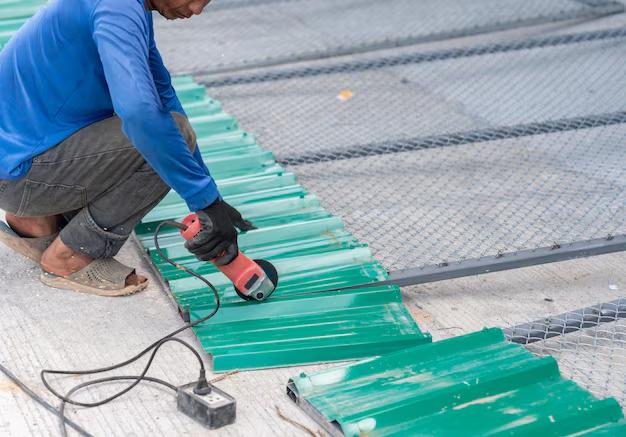Replacing Your Roof: What You Need to Know About Costs
Changing the roof over your head might not be as simple as buying a new hat—but it’s just as important for protection. Knowing how much it costs to replace a roof can help you plan and budget effectively, ensuring your home remains secure and weatherproof. Whether you're fixing weather damage, upgrading materials, or simply refreshing your home's look, understanding the financial aspect is crucial.
Understanding Roof Replacement Costs
The cost to replace a roof typically varies by region, material, labor, and the size and pitch of your roof. Here's a quick overview:
- Material Type: Different materials come with varying prices. Asphalt shingles, for instance, are the most common and cost-effective option, while slate or metal roofs offer greater durability but at a higher price point.
- Roof Size: The larger the roof, the more materials and labor required. Roofers generally charge by the square foot, so a bigger roof equals a bigger bill.
- Labor Costs: Labor makes up a significant portion of the total roof replacement expense. While DIY could save money, hiring professionals ensures quality and compliance with safety codes.
- Complexity and Extras: Features such as chimneys, skylights, and complex angles could increase costs due to the additional time and expertise required.
Ballpark Figures
To give you an idea, expect average roofing costs to be between $5,000 to $10,000, with most homeowners spending around $8,000. However, premium materials like slate, metal, or tile could push costs well over $20,000.
Financing Your Roof Replacement
With costs spread across several factors, financing options become imperative. Whether you're short on savings or prefer to delay payments, several avenues can ease the financial burden.
Credit Solutions
Many roofing contractors offer payment plans or partner with financing companies. Additionally, using a low-interest credit card or applying for a home equity loan could facilitate the payments. However, be mindful of interest rates and repayment terms.
Government Aid and Assistance
Home improvement grants or loans are available through local or federal programs. The Weatherization Assistance Program (WAP), for example, helps lower-income households make energy-efficient upgrades to their homes, including roofing. It's worth checking with housing authorities or local community programs for available assistance.
Insurance Coverage
If your roof replacement is the result of storm damage or other unforeseen events, your homeowner’s insurance may cover some or all of the repair costs. It’s essential to understand your insurance policy and communicate with your insurer before starting any repair work.
Educational Opportunities
While financial aid might not directly apply to roof replacement, consider energy-saving educational grants or rebates which could make the transition to energy-efficient roofing materials more affordable. These not only reduce upfront costs but also lower future energy bills.
Financing and Assistance Programs 🌟
- 🏦 Low-Interest Credit Cards or Loans: Perfect for spreading out payments without high interests.
- 🏢 Home Improvement Grants/Programs: Check local and federal resources for available aids.
- 🏠 Home Equity Loans: Utilize home value for a lower-rate loan option.
- 📑 Homeowner’s Insurance: Coverage for damage-related replacements.
- 🔍 Weatherization Assistance Program: Federal aid for energy-efficient home modifications.
- 🌞 Energy Efficiency Rebates: Provides savings on environmentally friendly upgrades.
Taking the step to replace your roof is a big decision, often involving considerable expenses. However, with the right financial tools and assistance programs, you can make this home upgrade without breaking the bank. Protecting your investment starts with being informed; make the right financial choices today for a safer and more sustainable tomorrow.
